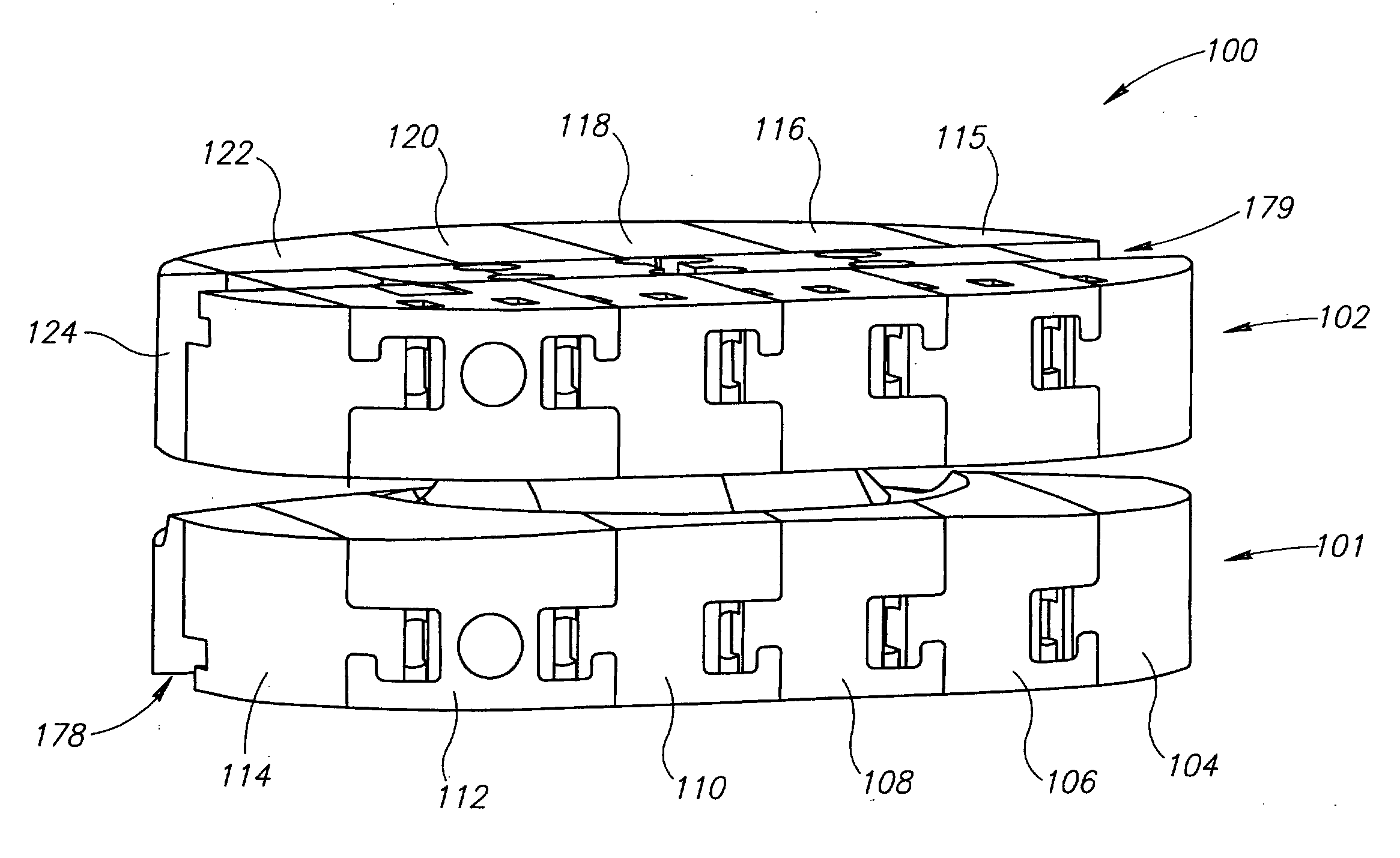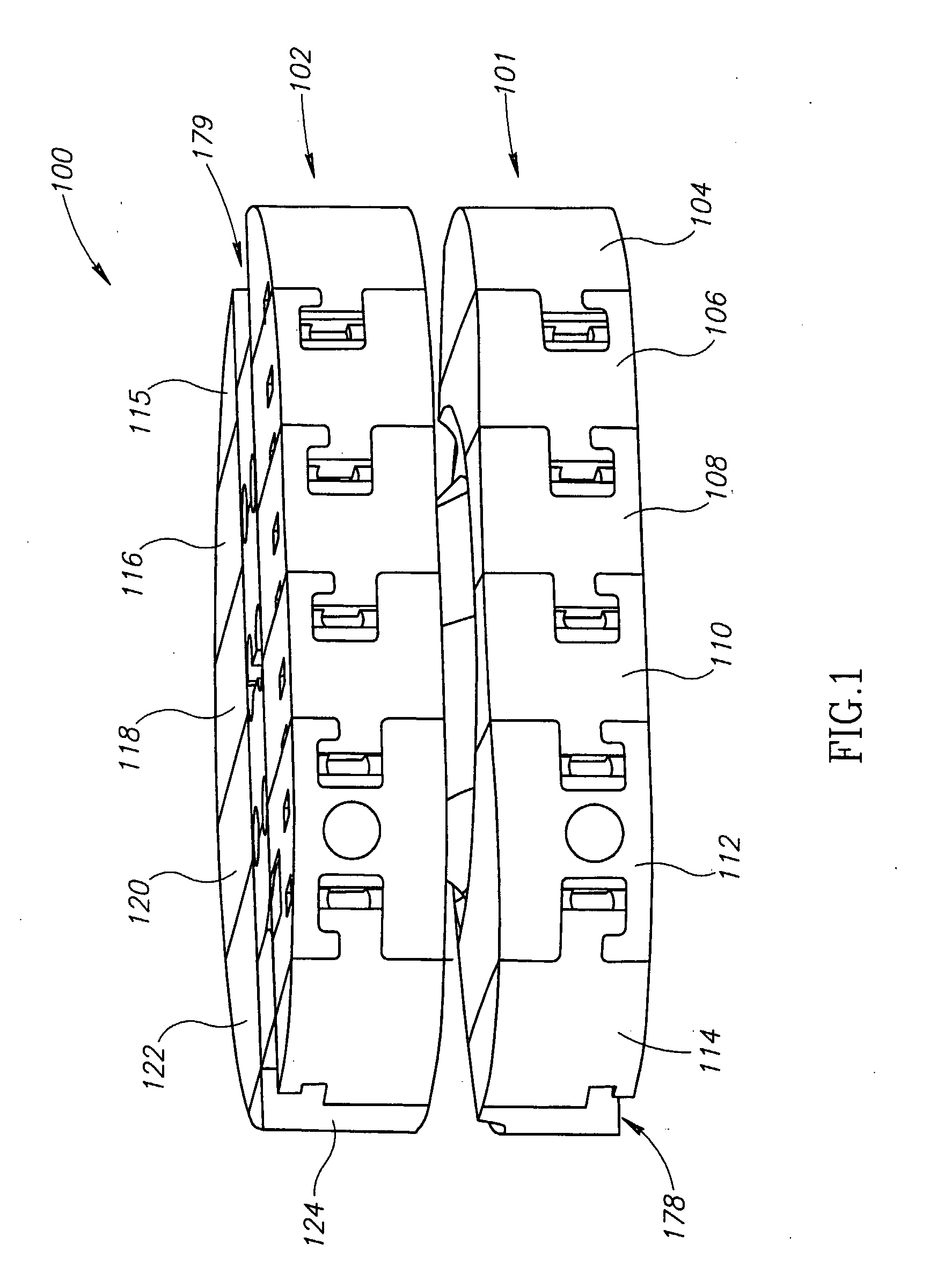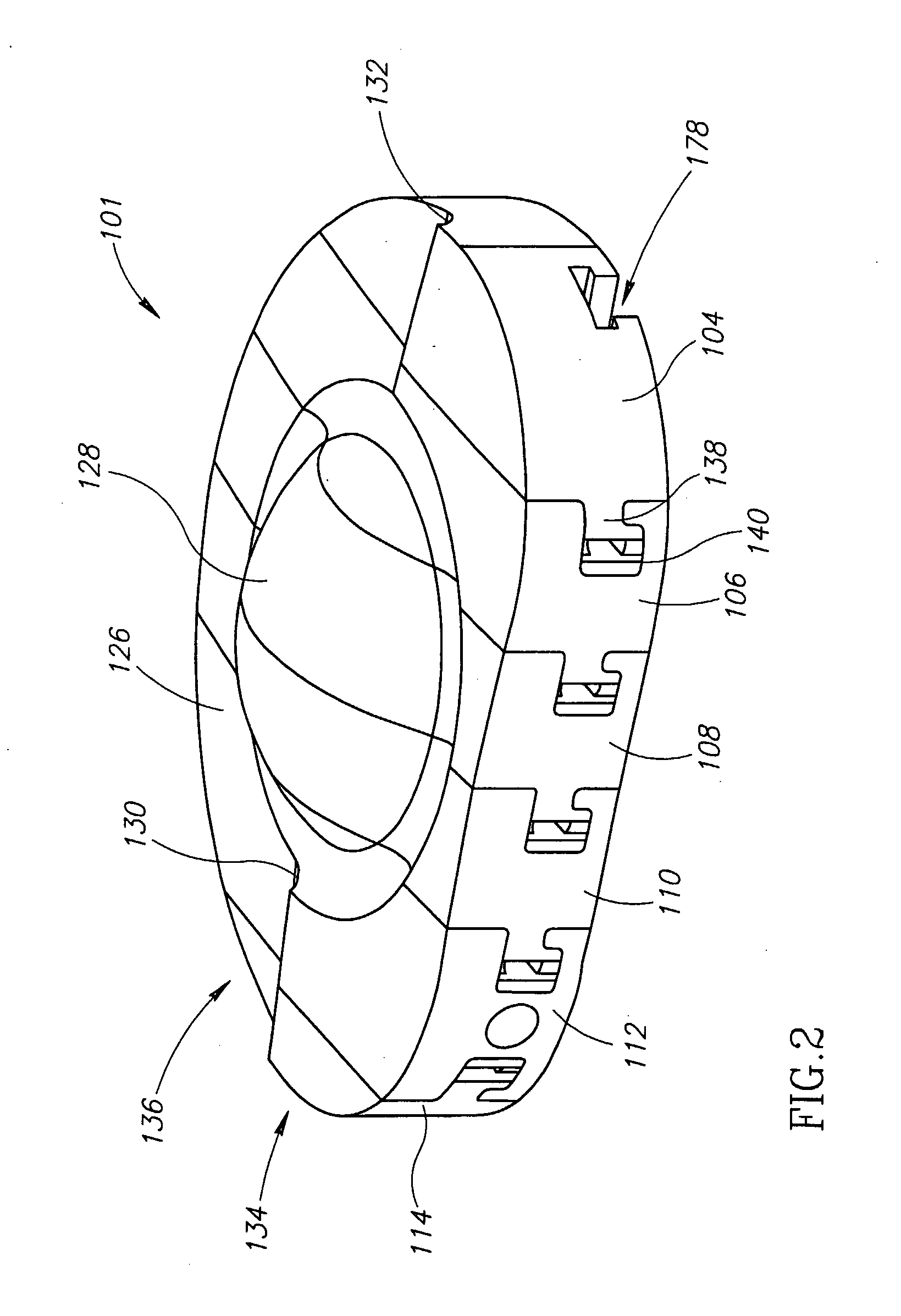Assembled Prosthesis Such as a Disc
- Summary
- Abstract
- Description
- Claims
- Application Information
AI Technical Summary
Benefits of technology
Problems solved by technology
Method used
Image
Examples
Embodiment Construction
[0077]FIG. 1 illustrates a disc prosthesis 100, comprising an inferior plate 101 and a superior plate 102, in accordance with an exemplary embodiment of the invention. The two plates 101, 102 have a same circumference / contour line, although different dimensions and / or shapes for each of the two plates 101, 102 may be provided in some embodiments of the invention. Each plate 101, 102 is composed of six slices 104-114, 115-124, respectively. Other number of slices may be provided and, in general, the number of plate slices and their cross-sections may depend on disc size and / or the disc's location. The plates 101, 102 may be connected to their adjacent vertebral endplates by protrusions (not shown in FIG. 1), for example protrusions that project from a slot (or a windowing element) 178, 179 in each plate 101, 102, respectively, toward endplates of adjacent vertebrae and penetrate them following prosthesis insertion, for example, to prevent prosthesis migration.
[0078]FIG. 2 shows lower...
PUM
| Property | Measurement | Unit |
|---|---|---|
| Diameter | aaaaa | aaaaa |
| Diameter | aaaaa | aaaaa |
| Area | aaaaa | aaaaa |
Abstract
Description
Claims
Application Information
 Login to View More
Login to View More - R&D
- Intellectual Property
- Life Sciences
- Materials
- Tech Scout
- Unparalleled Data Quality
- Higher Quality Content
- 60% Fewer Hallucinations
Browse by: Latest US Patents, China's latest patents, Technical Efficacy Thesaurus, Application Domain, Technology Topic, Popular Technical Reports.
© 2025 PatSnap. All rights reserved.Legal|Privacy policy|Modern Slavery Act Transparency Statement|Sitemap|About US| Contact US: help@patsnap.com



